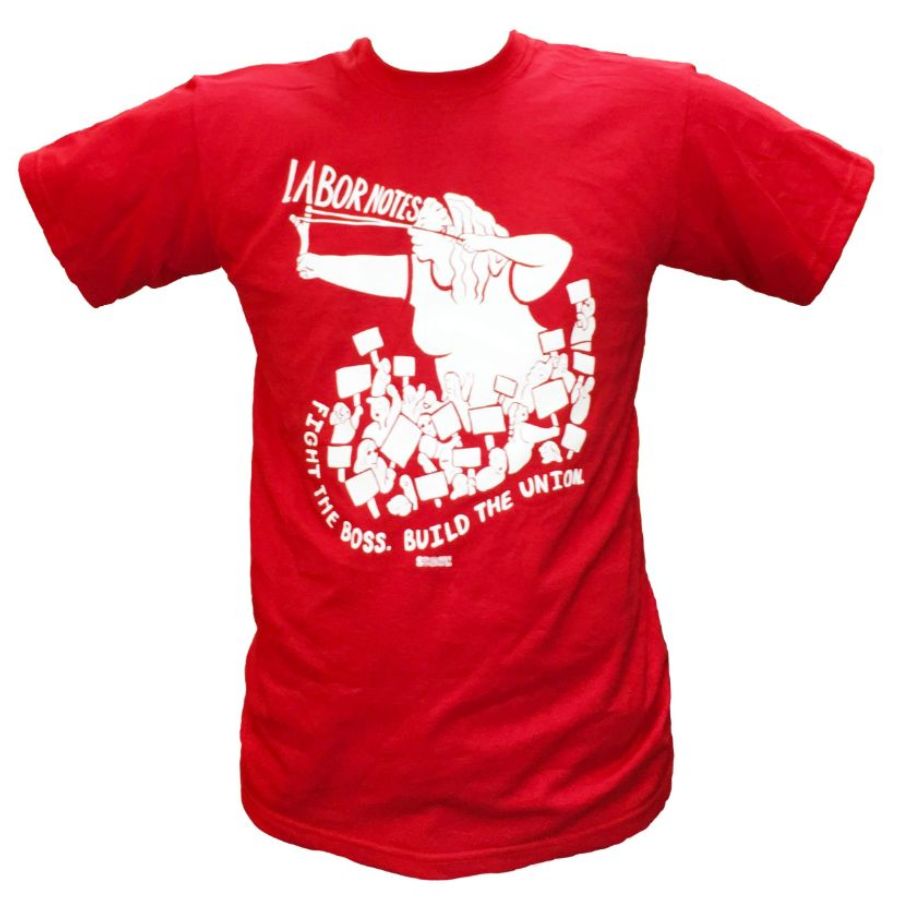Steward’s Corner: Help Members Know Their Contract
Turn unclear contract language on frequent sticking points into something relevant and readable. Photo: Jenny Brown
Union contracts can be dense, legalistic, and shaped by unwritten past practices. Sometimes they’re not even in the first language of most employees. Yet if union members don’t know what their contract says, employers can rob workers of rights that the union won at the bargaining table.
Here’s one way to ensure that workers really know what’s in their contract: Write a short, clear summary of the contract’s highlights—call it “Know Your Contract”—and use it to engage your co-workers.
IDENTIFY KEY ISSUES
To generate a list of topics for your “Know Your Contract” quick reference guide, you might hold a short discussion at your next executive board or steward’s meeting. Ask participants: “What grievances keep popping up? What do we wish every member knew?” You’ll quickly generate a list of the issues most affecting people on the job right now.
Then zero in on each issue your fellow stewards have identified. What’s the problem? What does the contract say about it? What is the enforceable past practice that folks need to know, but won’t find anywhere in the contract?
A CLEAR, SNAPPY DOCUMENT
Turn the relevant contract language on those issues into something everyone can understand. Here’s a typical bit of language buried in my union contract: “There shall be a duty-free lunch period for all unit members of at least thirty (30) consecutive duty-free minutes.” Turn that into: “All employees get a lunch break of at least 30 minutes without any work duties.”
The more formal language might serve you well when you’re in front of an arbitrator. But if your co-workers don’t know their rights are being violated when they’re asked to answer work calls during lunch, that policy you won at the table will never be enforced.

SUPPORT LABOR NOTES
BECOME A MONTHLY DONOR
Give $10 a month or more and get our "Fight the Boss, Build the Union" T-shirt.
Be sure to tell people what they should do if their rights are violated. Go to their shop steward? Document the who, what, when, and where and call the grievance committee? Every union has a different process. Be explicit about it.
Keep “Know Your Contract” short and relevant. Add a QR code or let members know where they can find a copy of the full contract. An example can be found here, and a video example is here.
USE IT TO CONNECT
You might want to update your document every year—and use the occasion to get people talking about the union contract. And/or put a snippet of the document into each newsletter or into a series of social media posts.
“Know Your Contract” and your posts about it are a great excuse to go talk to people. Don’t just post it on the union bulletin board or stick flyers under windshield wipers. Give “Know Your Contract” to members in person. At your next general meeting. In the breakroom. When you’re walking up the steps together in the morning.
If you highlighted the right issues, you’ll probably find that many co-workers are more ready to talk about what’s happening to them, and more prepared to sign on to a grievance or demand a meeting with their boss. When they hear that their co-workers are fed up, too, they’ll start thinking about what they can do—together—to win respect at work.
John Green works for the California Teachers Association in San Joaquin County.





